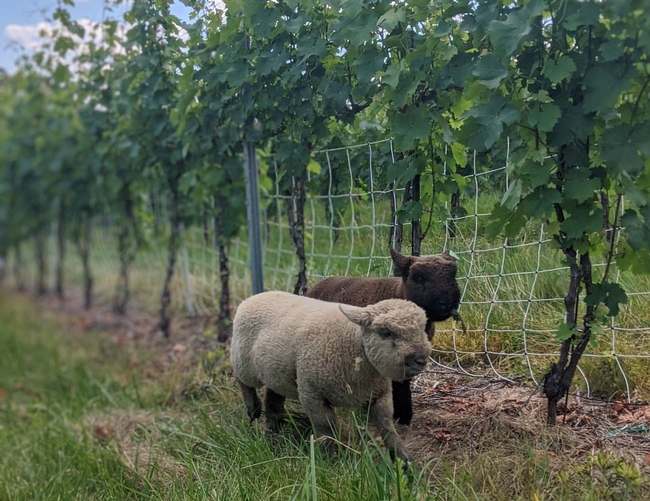Why integrate livestock into your cropping system?
Historically, farmers raised both crops and livestock because they are mutually beneficial. In an article titled, “Integrating Livestock and Crops: Improving Soil, Solving Problems, Increasing Income,” Linda Coffey and Tra
Here are a few examples of integrating livestock into cropping systems, and the benefits that result.
|
Seasonally grazing sheep in the vineyard reduces fossil fuel usage, reduces and eliminates the use of herbicides, produces manure to provide nutrients and organic matter to the soil, and results in a high quality, grass-fed lamb. |
Ducks are used to control pests in South African Vineyards which reduces the use of insecticides, and their manure provides additional nutrient benefits to the soil. |
|
Massa Organics combine cover crops, no-till, and uses sheep to control the plant growth on the floor of their almond orchard, thus eliminating the need for herbicides and artificial fertilizers. |
A farm that grows a variety of processing vegetables uses strip tillage and cattle to graze their high residue cropping system. This reduces erosion, improves the soil structure, and brings in additional revenue. |
References: